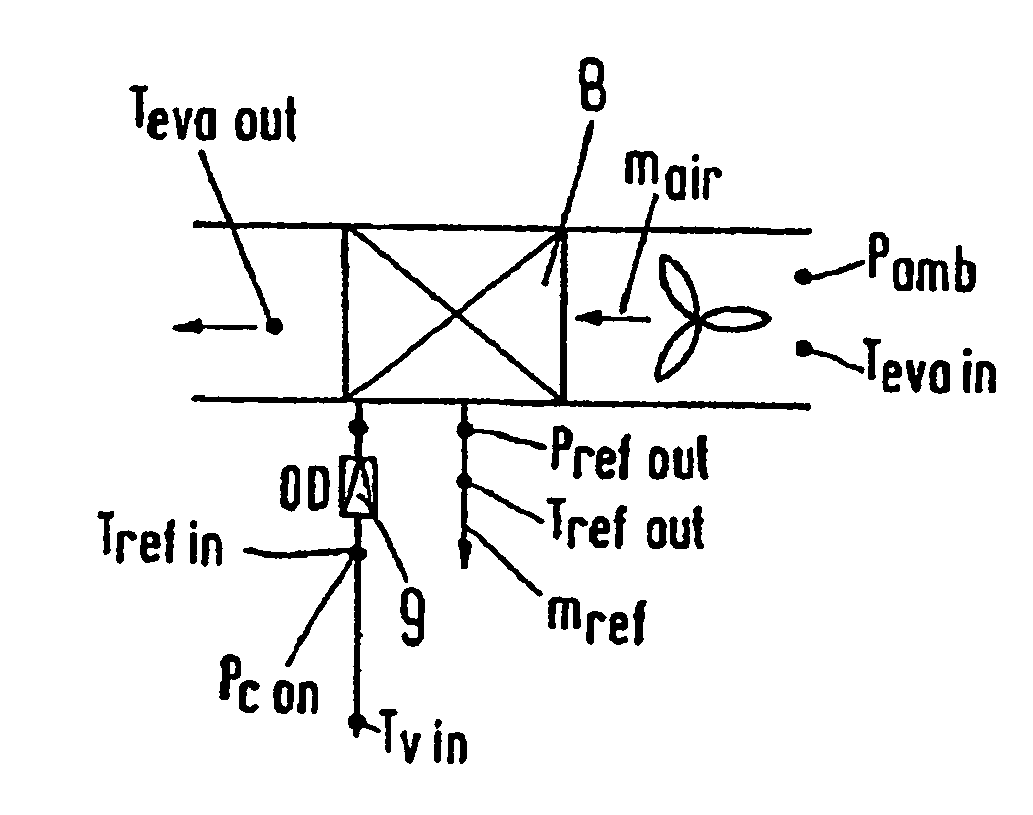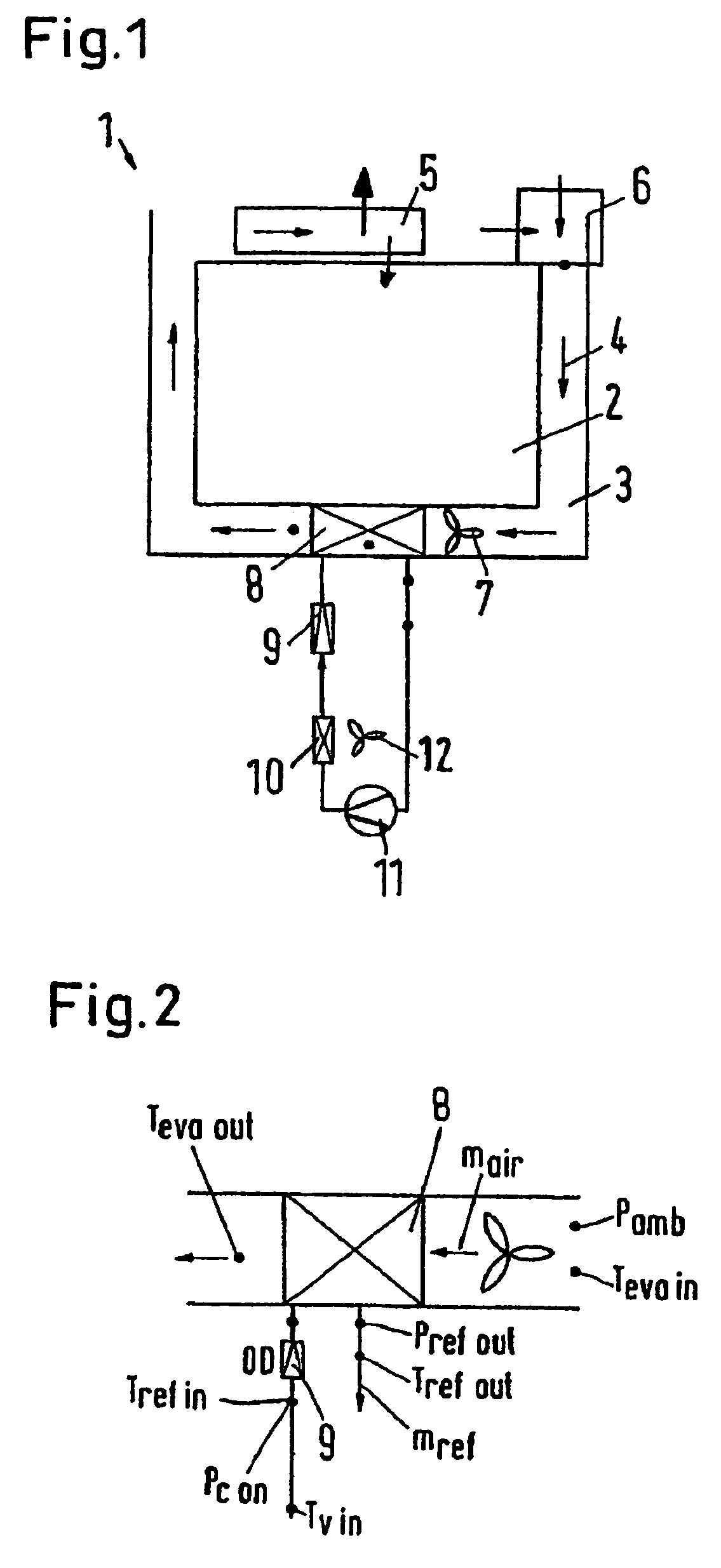Method for detecting changes in a first media flow of a heat or cooling medium in a refrigeration system
a technology of heating or cooling medium and first media stream, which is applied in the field of detecting changes in the first media stream of a heating or cooling medium in a refrigeration system, can solve the problems of hindering air flow, difficult to determine the mass of flowing air, etc., and achieves the effect of facilitating the evaluation of determined signals, high frequency and easy monitoring of residuals
- Summary
- Abstract
- Description
- Claims
- Application Information
AI Technical Summary
Benefits of technology
Problems solved by technology
Method used
Image
Examples
Embodiment Construction
[0031]FIG. 1 shows schematically a refrigeration system 1 in the form of a low temperature sales chest, such as used for example in supermarkets for the sale of refrigerated or frozen foods. The refrigeration system 1 has a storage space 2, in which the foods are stored. An air channel 3 passes around the storage space 2, that is it is located along both sides and the bottom of the storage space 2. An air flow 4 which is indicated by the arrow, after passing through the air channel 3 moves into a cooling zone 5 located above the storage space 2. The air is then again delivered to the entrance of the air channel 3 at which is located a mixing zone 6. In the mixing zone the air stream 4 is mixed with ambient air. In this way compensation is made for the cooled air which moves into the storage space 2 or which otherwise disappears into the surroundings.
[0032]A blower arrangement 7 is arranged in the air channel 3, which arrangement can be formed by one or more fans. The blower arrangem...
PUM
 Login to View More
Login to View More Abstract
Description
Claims
Application Information
 Login to View More
Login to View More - R&D
- Intellectual Property
- Life Sciences
- Materials
- Tech Scout
- Unparalleled Data Quality
- Higher Quality Content
- 60% Fewer Hallucinations
Browse by: Latest US Patents, China's latest patents, Technical Efficacy Thesaurus, Application Domain, Technology Topic, Popular Technical Reports.
© 2025 PatSnap. All rights reserved.Legal|Privacy policy|Modern Slavery Act Transparency Statement|Sitemap|About US| Contact US: help@patsnap.com



